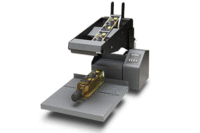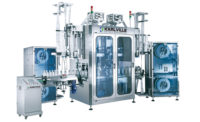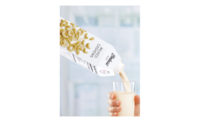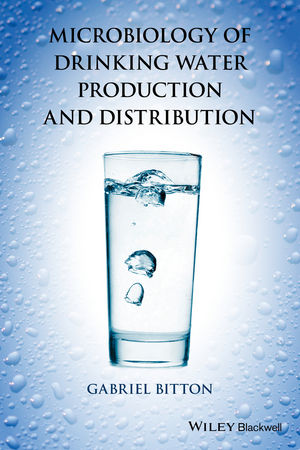Labeling Options Offer Marketing, Production
Advantages
By JENNIFER KOROLISHIN
As technology has evolved,
beverage labeling has been transformed from a commodity to a powerful
marketing tool that provides differentiation in
a crowded marketplace.
“More and more, the beverage industry is
treating the label as an important part of the package, especially with new
brands or products [companies are] trying to reposition,” says Dan
Muenzer, vice president of marketing for Spear USA, a Cincinnati-based
supplier of film pressure-sensitive labeling systems.
There are four main beverage labeling options —
cut-and-stack, full-wrap hot-melt or spot-cold-glued film or paper labels;
roll-fed, usually produced with laminated film constructions;
pressure-sensitive; and shrinkwrap. In choosing a label type and
application method, beverage-makers must consider how established a brand
is and its production volume.
“If your product is high-volume and is required
to be produced at the lowest possible cost, such as bottled water,
you’re most likely to select the lowest cost, most efficient method
such as cut-and-stack labeling,” says Lou Iovoli, director of sales
and marketing for Hammer Lithograph Corp., an offset and flexographic
packaging printer in Rochester, N.Y. “Business in this category is
not often going to use a screen-printed, pressure-sensitive label because
at high volumes it becomes a difficult cost/benefit analysis. When you
multiply a tenth of a penny per label by 10 million bottles, it is
significant.
“The question becomes will I generate
incremental new sales for the additional cost and impact on operations?
Will my throughput be impacted significantly by the labeling equipment
needed? And do I have to invest in new capital to apply the
label?”
Bottle shapes influence label choices, as do product
and packaging color — clear labels are popular in cases where color
is among a product’s main features. “We’ve seen, in the
past 10 years, the growth of the clear, no-label look,” says Muenzer.
“That’s been growing at about four times the rate of standard
labeling. Beverage marketers tend to view a no-label look package as more
contemporary, modern and hip.”
“A clear, no-label look can be achieved today
with pressure-sensitive, roll-fed, and full-wrap cut-and-stack
labels,” adds Iovoli. “The newest of the options is clear
full-wrap cut-and-stack labels so bottlers with traditional labeling
equipment can get the same no-label look.”
Cost, package type and marketing are key
considerations in choosing a label, yet beverage categories also tend to
influence manufacturers’ selections.
Wine and beer
“The wine industry has gravitated toward
pressure-sensitive labeling, as opposed to the standard cut-and-stack
label,” says Muenzer. “Within pressure-sensitive, they can use
film or they tend use specialty paper pressure-sensitive labels because it
gives the traditional look of wine, but steps it up a notch.”
In addition to design flexibility, winemakers often
use pressure-sensitive labeling systems on their filling lines due to the
efficiency and quick job changeovers offered by the application equipment.
Meanwhile, the beer industry, a predominant user of
paper labels, is now beginning to shift toward pressure-sensitive labels;
Anheuser-Busch’s conversion of its Bud Light brand is one
high-profile example. Fast line speeds and high volume previously made
pressure-sensitive labeling impractical, but new technology is moving
labeling closer to traditional speeds.
Historically, price has been a barrier to using
pressure-sensitive labels in the beer category — they are typically
as much as three times more expensive than paper. “Pressure-sensitive
is more expensive on a label-to-label basis, but what brewers are starting to recognize is that there’s a total
applied cost to the system,” says Muenzer. “If you take into
account machine efficiencies — uptime, job changeover time,
everything beyond the cost of the label — in many cases,
pressure-sensitive is less expensive.”
Spirits
Spirits labeling is often a hybrid of wine and beer
category trends, with many manufacturers converting to a variety of
label styles. Spirits companies have been more progressive than
brewers in using alternative decorating methods, and many use a combination
of paper and film labels to achieve a unique look.
“For example, Bacardi Limon is geared as a
contemporary product, so the package is very dynamic and colorful and takes
advantage of the no-label look of film,” says Muenzer. “At the
other extreme, Bacardi also converted its standard white rum to
pressure-sensitive, but kept it in paper to be more consistent with its
traditional look.”
“Hammer has also seen the shift to greater
experimentation,” says Iovoli. “We are currently working with
two multinational brands to convert them from offset paper to a new, unique
engineered cold glue, metallized, synthetic cut-and-stack label. This
allows the user to get the sheen of metallized film and consistent
performance of synthetics without increasing costs or buying
pressure-sensitive labelers.”
Non-alcoholic beverages
In the soft drink category, flexoprinted, roll-label,
film wraps continue to be the standard due to high production volume. The
method also works well with contoured PET soft drink containers. “We
think it’s going to stay that way because of the capital expenditures
involved in changing to another method,” says Muenzer. “The
product is inexpensive, so manufacturers just don’t have the price
points to justify doing a lot with their package.”
However, the no-label look is popular among other
non-alcoholic beverages like fruit drinks, teas and coffee drinks. It
allows isotonics like Gatorade to show off the product’s color, which
often drives consumer selection.
“If you were talking about brands like
Gatorade, many people will pick their favorite color. The brand is that powerful,” says Iovoli. “In other
cases, clear labels are used because beverage-makers want the product to
interact with the package graphics to create maximum shelf
appeal.”
Other non-alcoholic beverages use shrink labels or
opaque pressure-sensitive labels to mask product separation or sediment.
“Shrink-sleeves have made inroads into the category,” says
Iovoli. “It’s a very forgiving manufacturing method, but
it’s more expensive because as you increase the label’s surface
area, you’re increasing raw material costs.”
In any category, Iovoli offers beverage-makers this
advice on finding the right label: “The key is to find a vendor base
that will accurately assist you in analyzing the most effective decorating
method for your goals, weighted against cost,
marketing and performance.” BI



